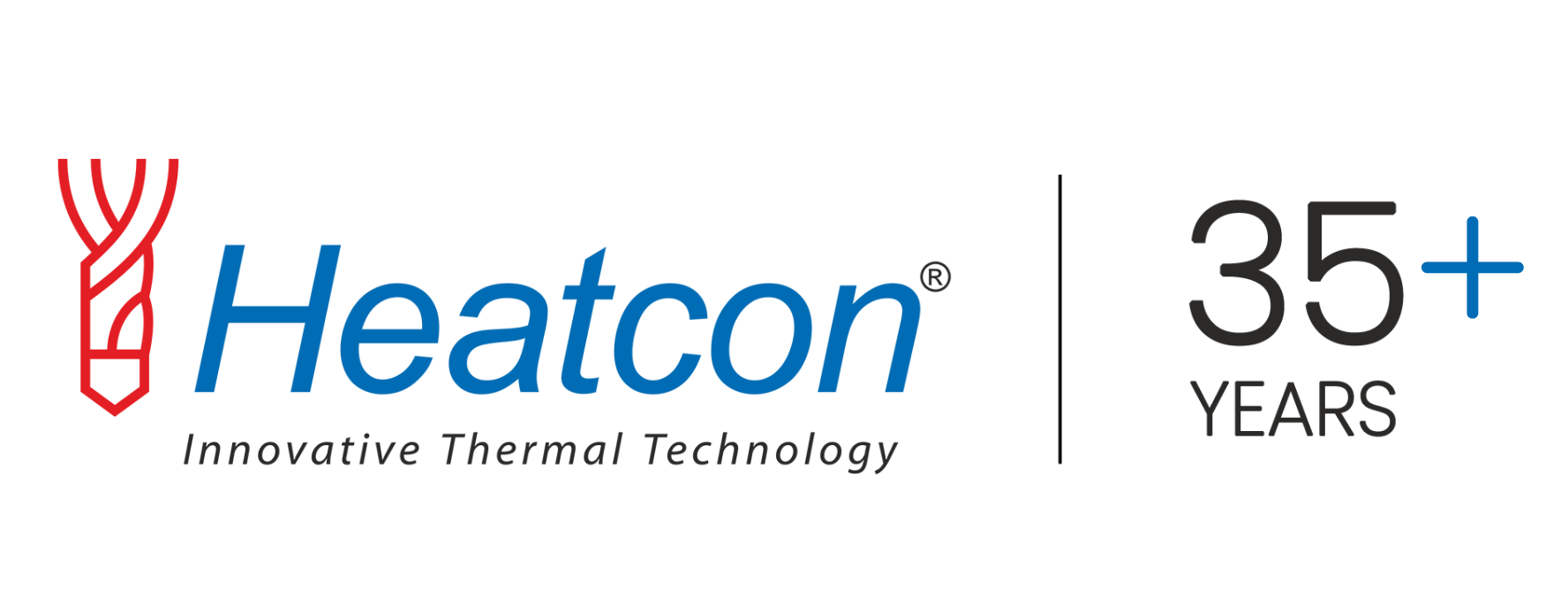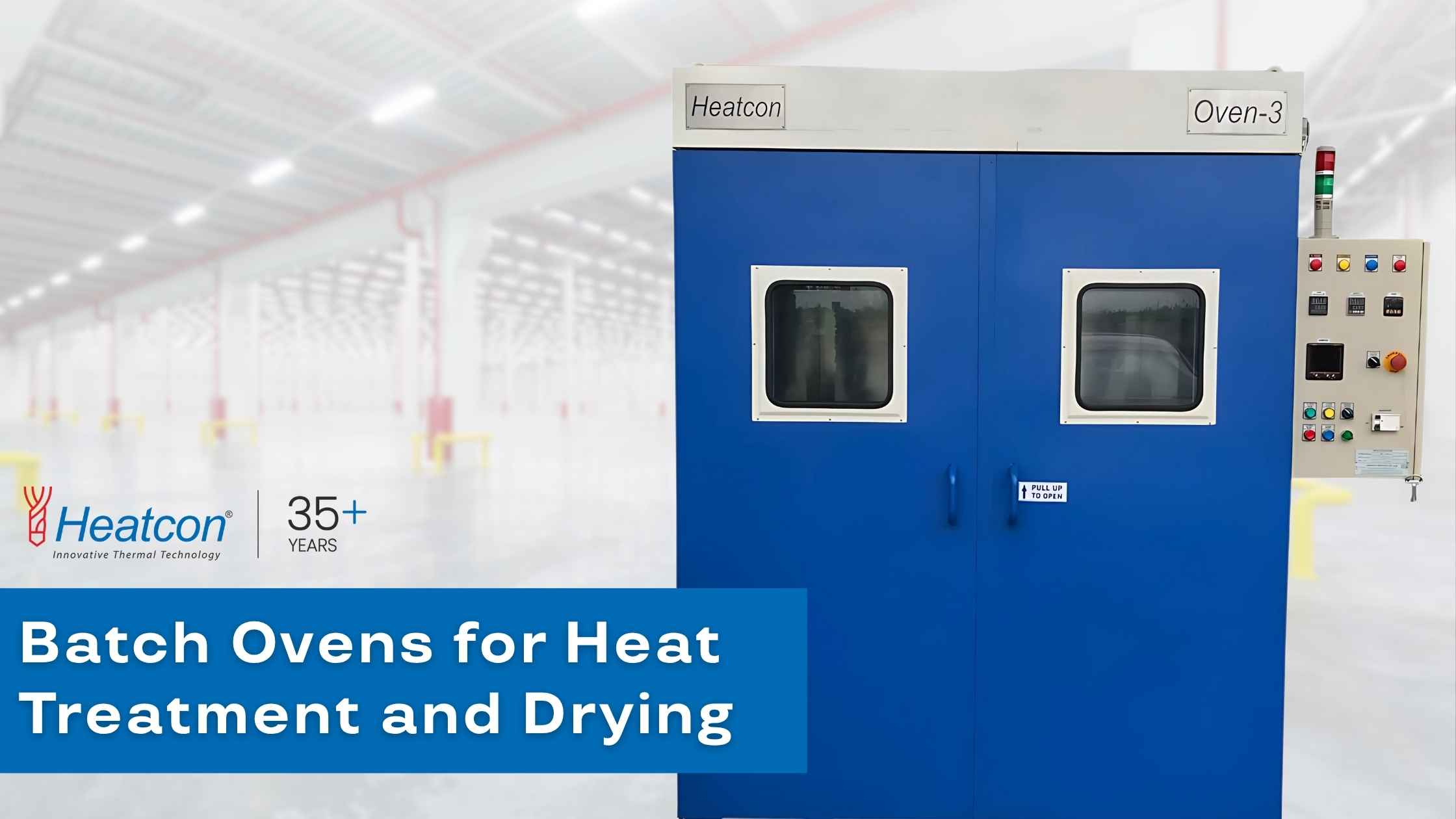The global industrial ovens market is projected to reach multi-billion dollar scale over this decade, and a significant share of that demand is driven by batch oven systems used for heat treatment, drying, curing and controlled thermal processing. That growth is not just a number. It is a signal that companies investing in better-controlled heat processes are getting higher output quality, lower energy waste and more predictable turnaround times — and companies that do not modernise are quietly falling behind.
In plain terms: if you work with metals, composites, coatings, adhesives, castings, resins or electronics, you are already in a race. The winners are using better ovens, smarter temperature control and traceable data. The others are paying more per batch without even realising it.
Heatcon Sensors supports that competitive edge. We design and supply temperature sensors like customised RTDs and thermocouples, along with industrial thermal systems such as ovens, furnaces, hot air blowers, electric furnaces and high density cartridge heaters. We deliver across India and to the US, UAE, Indonesia, Germany, South Korea, Saudi Arabia, Russia, Bahrain and Kuwait. So wherever you run production — whether it’s a high-throughput line in a metro industrial park or a specialised aerospace or automotive cell — you are not limited by geography when it comes to precision-controlled heating.
What is a batch oven and why is it central to modern manufacturing?
A batch oven is a temperature-controlled chamber that heats a defined group of components at once, following a repeatable cycle for drying, curing or heat treating. You load a set of parts, run a programmed thermal profile, unload, repeat. This sounds simple, but it is the backbone of quality in many industries because it locks in final properties like hardness, coating adhesion, electrical stability and moisture removal efficiency.
Here is why a batch oven matters:
- Flexibility of loading: You can process different shapes and materials without rebuilding your line.
- Repeatability: You get consistent temperature uniformity from batch to batch when you use proper sensing and control.
- Traceability: You can document cycle histories for audits, certifications and quality signoff.
- Energy focus: You only heat what you need, when you need it.
If you outsource heat treatment or drying today because “that’s how we’ve always done it,” you are literally giving away control of these four advantages to somebody else. The Problem is loss of process control and margin. The Agitation is real: failed coatings, inconsistent hardness, rework and warranty claims. The Solution is to own your thermal process with reliable, instrumented ovens designed around your materials and quality targets.
How does a batch oven compare to a cabinet oven and a walk-in oven?
When engineers ask “Which oven do I actually need?” the honest answer depends on load size, handling style and throughput. The three most common configurations in production environments are a batch oven, a cabinet oven and a walk-in oven.
| Oven type | Typical usage | Main advantages |
|---|---|---|
| cabinet oven | Lab work, small-batch parts, R&D samples, electronics assemblies | Compact footprint, easier to install, faster heat-up for smaller loads |
| walk-in oven | Large welded frames, aerospace panels, automotive sub-assemblies | High-volume capacity, cart or forklift loading, operator access inside chamber |
| batch oven | General purpose batch processing for drying, curing or heat treatment | Versatile, scalable, good balance between capacity and flexibility |
The wrong choice hurts. Overspecify capacity (for example installing an oversized walk-in oven where a cabinet oven would do) and you waste energy while underutilising expensive space. Underspecify capacity (trying to push full-size frames into a small unit) and you risk poor air circulation and temperature non-uniformity, which leads to failed output. A correct match gives you predictable, certifiable results lot after lot.
Where are these ovens used in real processes?
Batch ovens show up everywhere you need stability, dryness, cure strength or controlled heat treatment. A single line may use multiple zones with different goals, such as an industrial drying oven stage to remove moisture, followed by an industrial curing oven stage to chemically set a coating.
- Metals and fabrication: Stress relieving, tempering, annealing and hardness control after welding or machining.
- Surface coating and painting: Flash drying followed by curing for adhesion and corrosion resistance.
- Composites and polymers: Curing of laminates, aerospace-grade resin systems, carbon fibre components.
- Electronics and electricals: Moisture removal, potting compound curing, insulation bake-out.
- Automotive, rail, heavy equipment: Preheating components before assembly, controlled post-process bake cycles.
In other words, when you see flawless coating adhesion, repeatable hardness, predictable insulation resistance at temperature, or low residual moisture in a critical component, there is usually a controlled oven process behind it. That is exactly where Heatcon Sensors operates with clients: not just selling an oven, but helping define the temperature profile and the instrumentation that proves you met it.
What is an industrial drying oven and when do you need one?
An industrial drying oven is built to remove moisture, solvent or volatile elements from a product under controlled temperature and airflow. You need it when parts, coatings, castings or electronics must reach a specified dryness or moisture content before moving to the next operation.
Moisture control is not cosmetic. Too much trapped moisture can lead to blistering in coatings, internal corrosion, premature failure of electronics, dimensional shifts in precision assemblies and even safety issues in high-voltage systems. By running your product through an industrial drying oven phase with properly positioned RTDs and thermocouples, you verify that every critical zone of the part actually reaches and sustains the required temperature long enough to drive out residual moisture.
Heatcon Sensors supports this by pairing the oven hardware with calibrated temperature sensors designed to match your geometry, your clearances and your documentation requirements. This is how you go from “we think it’s dry” to “we can prove it’s within spec.”
What is an industrial curing oven and why is cure so important?
An industrial curing oven is used to drive chemical cross-linking or final bonding in paints, varnishes, adhesives, powder coats, composites and resins. Cure is about chemistry. If the cure profile (time and temperature) is wrong, then the coating or bonding layer may look fine at dispatch but fail in service under vibration, heat, UV, electrical load or corrosion stress.
In industries like automotive, aerospace, rail, marine and energy, failure in the field is vastly more expensive than getting cure right in-house. That is why an industrial curing oven with properly controlled ramp rates, soak times and uniformity is seen not only as a production tool, but as a risk-control tool.
The best approach is to close the loop: the oven must reach uniform temperature, stay there, and log that data; and the sensors must be accurate, responsive and placed in the right locations. Heatcon Sensors provides both the controlled heating environment and the custom RTDs/thermocouples that allow you to sign off each batch with confidence and traceability.
When do you need a custom industrial oven instead of an off-the-shelf unit?
You need a custom industrial oven when your process requirements cannot be safely or efficiently met by a standard size or layout. Typical triggers for going custom include unusual part size, very heavy loads, strict certification requirements, aggressive ramp-up profiles or non-standard atmospheres.
- Load dimensions and handling: Oversized turbine housings, welded chassis frames, aerospace panels and similar parts often demand special loading systems, sometimes cart- or rail-based. A generic oven might not handle the mass or airflow correctly.
- Exact temperature uniformity: Some specifications call for tight uniformity across a huge surface area. That requires engineered airflow, baffling and heater placement.
- Non-ambient atmosphere: Certain curing or heat treatment applications require inert gas, controlled humidity, or even partial vacuum.
- Documentation requirements: Some industries require complete data logging, calibration traceability and archivable cycle records for each batch shipped. Integrating custom sensors and control logic at build-time is cleaner than bolting it on later.
- Energy optimisation: Energy cost and sustainability targets are now board-level topics. A custom design helps you meet green targets by minimising losses and reducing wasted kWh per cycle.
Heatcon Sensors can design and supply a custom industrial oven, a batch oven, a cabinet oven, a walk-in oven, an industrial drying oven or an industrial curing oven package aligned to your process instead of forcing your process to adapt to a generic box. When you control the spec, you control the outcome. That is where you gain durable competitive advantage — and where slower competitors start quietly leaking margin.
How do sensors, controls and documentation complete the picture?
It is not enough to “have heat.” You need to measure, prove and repeat. That’s why the combination of reliable temperature hardware and intelligent sensing is so critical. Heatcon Sensors manufactures customised RTDs, thermocouples, temperature probes and related instrumentation for extreme industrial environments. That means:
- High-temperature RTDs for precision monitoring in furnaces and ovens
- Thermocouples suitable for high ramp-rate processes
- Insertion and surface sensors for metals, composites and electronics
- Sensors for electric furnaces, hot air blowers and high density cartridge heaters
- Traceable calibration and documentation support for audits and compliance
When you can prove that every batch hit its target profile, you move from reactive firefighting (“why did that coating delaminate?”) to proactive quality assurance (“release approved, profile on record”). That shift alone can save enormous cost in recalls, returns, fines, rework and brand reputation damage.
How do I get started with Heatcon Sensors?
Taking the next step is simple and designed for decision-makers who want clarity, not guesswork. You have three direct options:
- Submit your information on the form at https://heatconsensors.com/contact-us/
- Leave a message on WhatsApp through the interface available on the Heatcon Sensors website
- Call +91 9164833027 or +91 9844233244 for immediate assistance
If you continue running thermal processes without a properly specified oven, or without reliable sensor feedback, you are accepting higher risk and higher cost per part than you need to. Competitors in India, the US, the Gulf and Europe are already investing in better-controlled heating infrastructure. You deserve the same or better. The fastest way to close that gap is to talk to Heatcon Sensors and ask for a correctly specified solution instead of patchworking the problem later.
In summary: precision-controlled heating is not only about meeting today’s orders. It is about protecting tomorrow’s margins, certifying your quality story and building repeatable, export-ready manufacturing capability. Heatcon Sensors is positioned to deliver that — globally.
Frequently asked questions about batch ovens for heat treatment and drying
A batch oven is a controlled heating chamber where a defined load of parts is heated through a programmed cycle for drying, curing, or heat treatment. You load parts, run the cycle, then unload. This format is popular in automotive, aerospace, metal fabrication, electronics and composites because it delivers consistent temperature control and repeatability for quality-critical work.
Heatcon Sensors supports batch oven applications by providing both the oven system and the calibrated RTDs and thermocouples needed to monitor, record and prove process temperatures for every batch you release to production or to your customer.
A cabinet oven is typically a smaller, enclosed thermal unit for parts that can be handled by one operator and loaded on shelves or racks. It is ideal for low to medium volumes, lab work, R&D runs, or electronics drying and preheating.
A walk-in oven is a larger chamber designed so operators can walk in or roll in heavy carts, frames, fixtures or large assemblies. This is used for bulkier components like welded chassis parts, composite panels, or sub-assemblies that cannot physically fit in a smaller enclosure. Heatcon Sensors can design and supply both formats, sized and rated for your workload and certification needs.
You need an industrial drying oven when moisture or solvent removal is a defined quality requirement and not just a convenience. Typical use cases include drying castings, removing residual moisture from electrical assemblies, and preparing coated or painted parts before final cure. Proper drying helps prevent blistering, internal corrosion, insulation failure and dimensional instability later in service.
Heatcon Sensors delivers ovens for drying stages and also provides high-accuracy temperature sensors so you can document that every zone of every part actually reached and held the specified temperature long enough to be considered “dry to spec.”
An industrial curing oven drives the chemical cross-linking or bonding process in coatings, paints, varnishes, adhesives, sealants, resins and composite systems. If your cure schedule is too cold, too hot, or not held long enough, coatings may look fine at dispatch yet fail under vibration, temperature, UV or corrosion stress in real-world use.
Heatcon Sensors helps manufacturers avoid in-field failure by supplying controlled curing systems and integrated RTDs and thermocouples that verify ramp rate, soak temperature and hold time for every load. This is especially important for customers in automotive, aerospace, rail, marine and energy sectors where early coating failure is simply not acceptable.
You choose a custom industrial oven when your process has non-standard demands. These demands might include very large or awkward parts, very heavy fixtures, extremely tight temperature uniformity across a big surface, specific ramp-up or ramp-down timing, an inert or low-oxygen atmosphere requirement, or mandatory traceable data logging for audits and compliance.
Heatcon Sensors engineers and supplies custom-built solutions so that the equipment is matched to your load, your specification and your customer’s certification expectations. That means less guesswork, less scrap, and less post-process rework. You are not forced to change your process just to fit whatever a catalogue happens to offer.
Yes. Heatcon Sensors not only supplies ovens — such as a batch oven, a cabinet oven, a walk-in oven, an industrial drying oven, an industrial curing oven or a custom industrial oven — but also manufactures customised RTDs, thermocouples and other temperature sensing instruments designed specifically for high-temperature and production environments.
This means you get hardware and instrumentation that are aligned from day one. You also get traceability, calibration support and cycle data capture that can be used for quality records, customer approvals, audits and compliance reporting. In many industries this level of documented control is no longer optional, it is expected.
Yes. Heatcon Sensors supports customers across India and internationally, including regions such as the United States, the United Arab Emirates, Indonesia, Germany, South Korea, Saudi Arabia, Russia, Bahrain and Kuwait. The goal is simple: you should not have to compromise on process control just because your plant is in a different geography.
Along with ovens, we also supply hot air blowers, electric furnaces, high density cartridge heaters and related thermal systems, plus the calibrated temperature sensors that prove each run meets spec. Whether you are scaling new production or upgrading an older line, we can help you standardise process quality across locations.
You can reach Heatcon Sensors in three direct ways:
- Submit your information using the contact form at https://heatconsensors.com/contact-us/
- Send a WhatsApp message through the interface available on the Heatcon Sensors website
- Call +91 9164833027 or +91 9844233244 for immediate assistance
If your current thermal process is costing you scrap, rework time or customer complaints, delaying the upgrade only increases the loss. Speaking with an engineering-led supplier now can prevent expensive failures later in the field.


